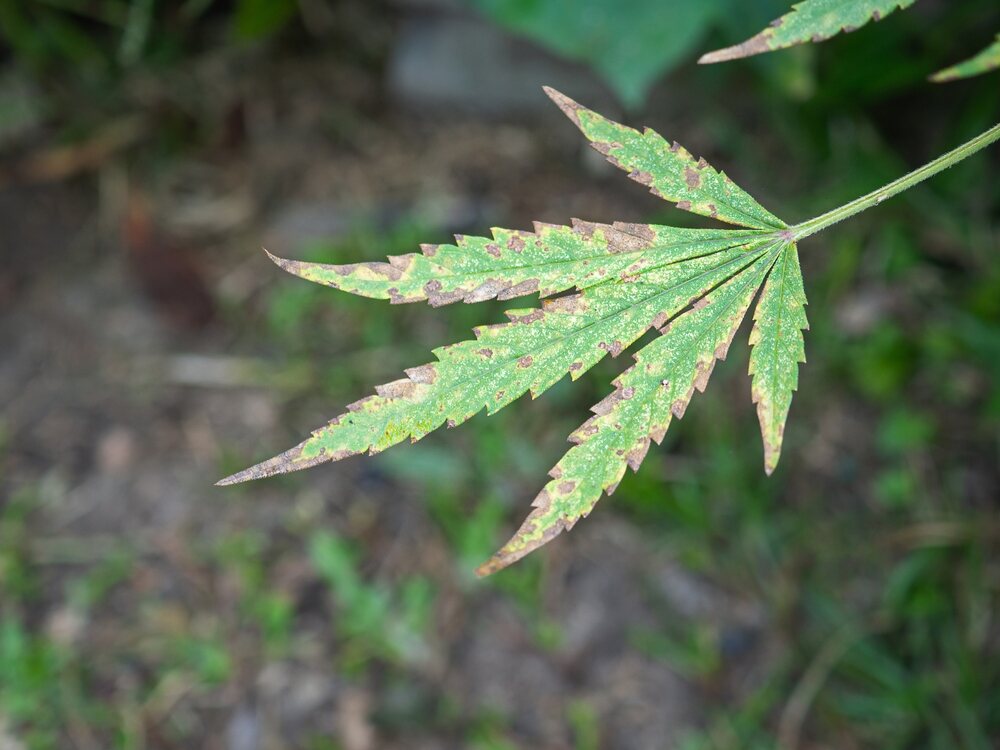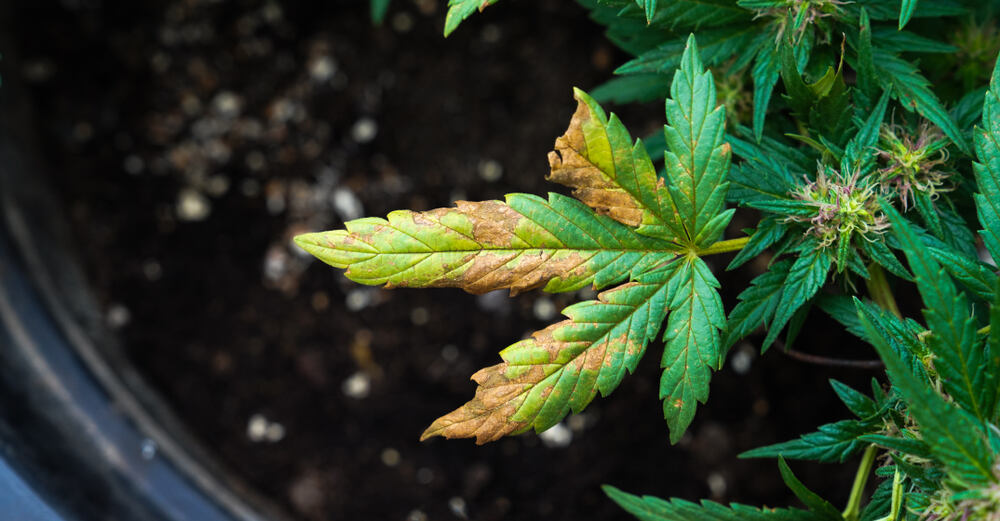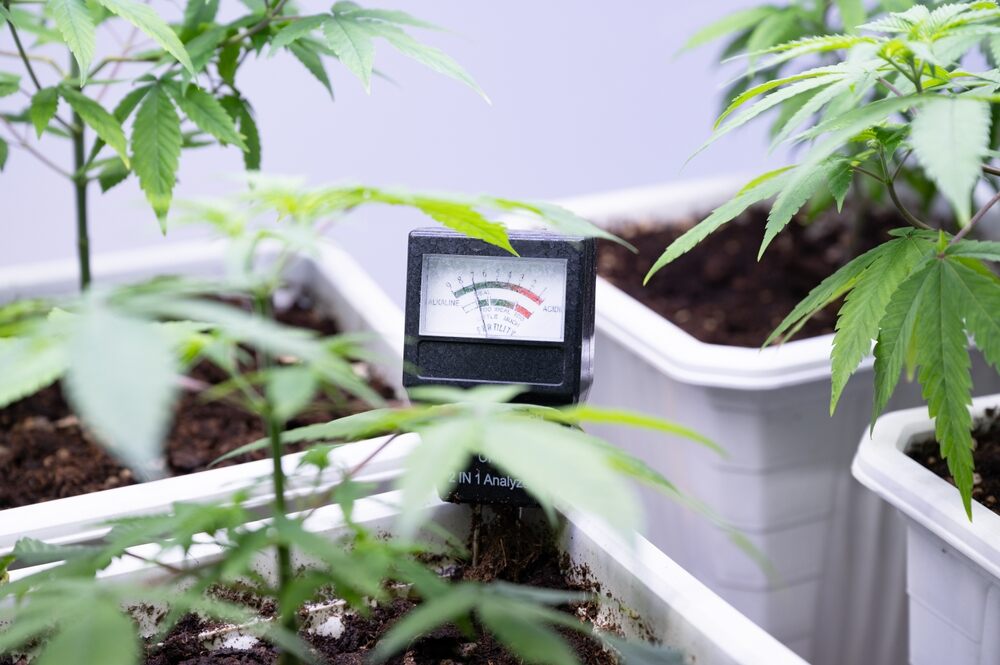
How to identify and fix phosphorus deficiency in cannabis
Phosphorus makes up a third of the macronutrient ingredient list that all plants (including everyone’s favourite – weed) need to not only survive but thrive. It is essential for photosynthesis, the process by which plants convert light energy into chemical energy, as well as for root development and overall plant growth.
But as any experienced grower will tell you, identifying and fixing phosphorus deficiency issues can take some know-how. If you think your crop may be struggling with a lack of phosphorus, you’ve landed in the right spot.
In today’s write-up, we will show you all the tell-tale signs of phosphorus deficiency, how to diagnose it, and, most importantly, how to fix it.
Why do cannabis plants need phosphorus?
While nitrogen is usually thought of as the most important nutrient for marijuana growth, without proper access to the correct concentration of phosphorus, your plants won’t be able to reach their full potential.
The most important role of phosphorus in cannabis growth is as an essential component of ATP (adenosine triphosphate) – a molecule that is the primary energy source for all cellular activity. Without proper ATP production, your plants won’t be able to perform crucial functions like:
- Photosynthesis – phosphorus helps convert light energy into chemical energy, which is then used to power cellular processes.
- Root development – phosphorus aids in developing strong, healthy roots, which are vital for nutrient uptake and overall plant health.
- Flower production – phosphorus plays a crucial role in the formation of buds, and making sure that the plants are accessing the right amount of phosphorus during the flowering period is crucial for a successful harvest.
- DNA and RNA – phosphorus is a key component in the formation of DNA and RNA, which are essential for cell division and growth.
What are the symptoms of phosphorus deficiency in cannabis plants?

As with most nutrient issues, the first place that telltale signs of a phosphorus deficiency will show up is in your plants’ fan leaves. Some common symptoms to look out for include:
- Fan leaf colouration – The fan leaves lose some of their vibrancy and turn dark, dull green or even a purplish/blueish hue – this will probably be the first noticeable sign.
- Fan leaf stems – The fan leaf stems (the petioles) may also turn a purple or even reddish colour.
- Blotching appearing – As the deficiency progresses, dark purple or brown spots may appear on the fan leaves, almost like rust marks. This will be more noticeable on the older leaves closer to bottom of the plant, as phosphorus is a mobile nutrient.
- Leaf death – As the deficiency gets worse, the fan leaves may start to die off and fall from the plant entirely.
- Stunted growth – As phosphorus is essential for overall plant growth, a deficiency can lead to stunted or slow growth in your plants.
How to treat phosphorus deficiency in cannabis plants?
Okay, so you’re pretty sure that the issue is a lack of phosphorus, and you want to start treating it right away. Before you go dumping a bunch of phosphorus-rich nutrients into your plants’ soil, there are a few things to consider
Check pH levels
The very first thing you should do if you think your plant (or crop) is battling any nutrient deficiency is to check the pH levels of your growing medium and water (or nutrient solution). If the pH levels are off, it can hinder your plants’ ability to absorb nutrients, even if they are present in the soil or nutrient solution.
Soil-grown plants need a pH of 6.0 to 7.0, while hydroponically grown plants (or those in coco-coir) require a pH of 5.5 to 6.5 for phosphorus absorption. If the pH levels are off, this could be preventing your plant from absorbing phosphorus and other necessary nutrients.
So:
- Grab your pH pen
- Make sure your water is at the correct pH
- If not, adjust it accordingly with the appropriate pH up or pH down product.
- Now, flush your plants with the adjusted water, making sure to saturate the entire root zone.
- Test the run-off water to ensure the pH coming out of the pots is at the correct level.
- If not, repeat the flush until you reach the correct pH.
Amend your soil or nutrient solution
If you’re growing in organic soil, you may need to amend your medium with phosphorus-rich products. Some options include:
- Bone Meal
- Bat guano
- Crushed eggshells
For hydroponic or coco-coir growers, you will need to check that the synthetic nutrients you’re using contain enough phosphorus. If not, switch to a different nutrient line or add a bloom booster product specifically designed for increasing phosphorus levels. And remember, always check your nutrient solution with a TDS or EC metre before you feed your plants, to ensure you’re not over or underfeeding them.
Foliar spray
If your plants show the later, more severe signs of phosphorus deficiency, you may want to consider foliar spraying them with a phosphorus-rich solution. This will allow the plants to quickly absorb the nutrients through their leaves and, hopefully, start to show signs of improvement within a few days.
How to prevent cannabis potassium deficiency?

Prevention is the best approach when it comes to nutrient deficiencies in cannabis plants. To avoid phosphorus deficiency, make sure to:
- Maintain the proper pH levels – less important for soil grown plants, but for hydro or coco-coir growers, this is crucial. Check the pH every time you feed or water, and at least once a week for soil.
- Soil growers should start with a high-quality, nutrient-rich soil mix – stay away from cheap or low-quality soils with insufficient nutrients.
- Maintain proper watering practices – Overwatering can lead to nutrient deficiencies, including phosphorus.
- Hydro or coco-coir growers should make sure to use a complete nutrient system from a reputable brand.
- Monitor your plant’s growth and health – All growers should be checking their plants daily for signs of nutrient deficiencies, disease, pests, and mould growth.
Cannabis phosphorus deficiency FAQs
How long does it take to correct cannabis phosphorus deficiency?
That depends on how severe the deficiency is, how effectively you treat it, and how your specific strains respond to the treatment. In most cases, you should start seeing improvements within a few days to a week after addressing the issue.
What is a good natural source of phosphorus?
A few fan favourites include bone meal, bat guano, and crushed eggshells. Other options include rock phosphate or fishbone meal.
Does phosphorus increase bud size?
Yes, phosphorus is a main player when it comes to both bud size and density.
